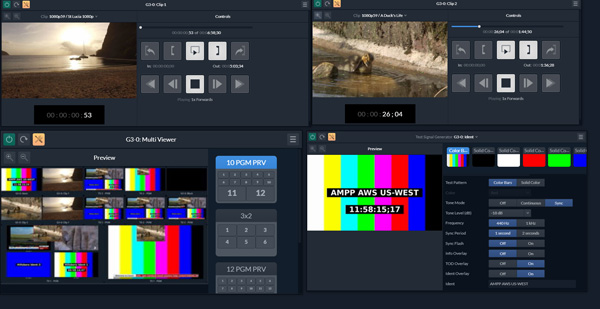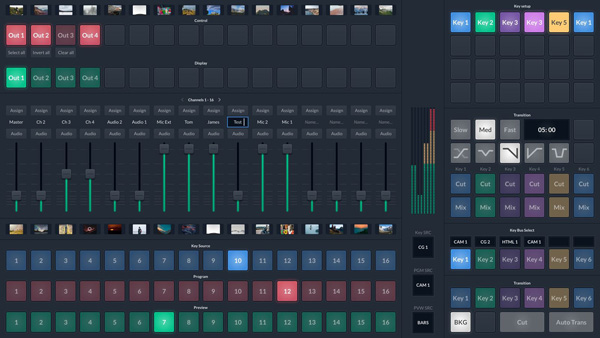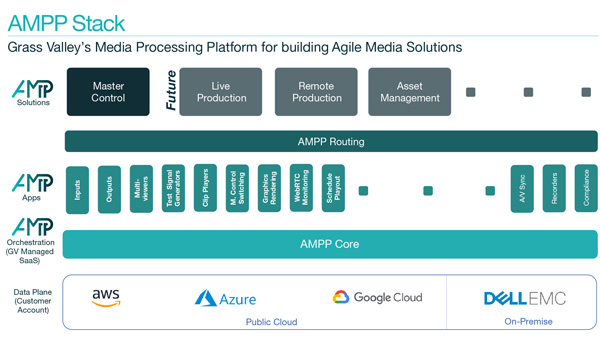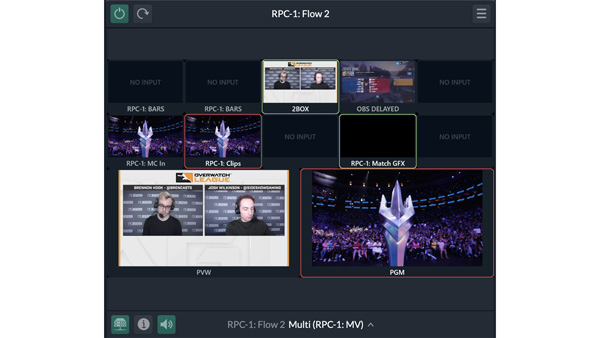
GV.UI
Live entertainment and media company De Tune in Los Angeles has started producing completely virtual, live broadcasts of their clients’ events. Their first virtual broadcasting customer was the creative agency Public School, helping the agency move the theatrical corporate events it runs for brands, to a virtual environment in the cloud.
“We wanted a production approach that is decentralised from the user’s point of view, but based on sound engineering that will remain consistent while users generate multiple outputs from a single user interface. We chose Grass Valley’s GV AMPP to do that – we can use it to monitor all the other aspects of the workflow to ensure they are behaving as we expect, and keep pushing out content despite the inconsistencies of the internet,” said De Tune’s Founder and CEO, Michael Thuney.
“This type of cloud-based approach is globalised, meets our clients’ needs beyond the restrictions of COVID-19 and means we can make wider use of the people and equipment. In other words, by keeping my team at home, they are available to work on more shows during the week.

Master Control switching
One GUI, Many Applications
For its first project with Public School, De Tune used the GV AMPP Master Control application to create a master control room in the cloud with full redundancy, accessible anywhere in the world. The workflow supported three hour-long events, delivered to six countries across EMEA, the Americas and Asia, featuring 40 presenters around the world, located in their respective homes with no on-site technical support.
Live feeds, with translations and closed captioning, were delivered to a global audience of 5,000 over CDNs. Using GV AMPP Master Control application, a De Tune team of 24 staff, also located remotely, was able to manage 37 TB of live video and data in the cloud. They regionalised the content by driving multiple outputs from the one interface, with on-air feed selection and an automatic graphics trigger, and produced up to eight different language feeds with one M/E. The software supports HTML5 graphics and was able to scale with changing requirements.

GV AMPP software stack
The system’s interface, called GV.UI, is also HTML5-based and visualises all GV AMPP applications on screen. You can customise and save layouts per production. As well as the Master Control switcher, De Tune’s team could access applications including a multiviewer, clip players serving as a video server, input stream recording and a graphics link – all through GV.UI. An I/O application for SMPTE ST 2110, NDI and SDI formats is included as well.
Low-Latency
All aspects of this continuous 24-hour broadcast were based in Azure and AWS cloud services, bringing in live presentation streams from the presenters in the UK, France, the United States, Australia, New Zealand and China. The deployment has allowed De Tune to take on the constraints of lockdown for now, and will help expand its production capability to stay ahead of trends as the media environment changes in the near future.

Flow monitor
Global low-latency streaming, and the ability to always choose the right mechanism, is a core function of GV AMPP. Low latency is achieved with H.264, HEVC, AAC or OPUS at any bitrate with configurable FEC (forward error correction) and support for RIST and SRT.
GV AMPP's architecture is based on intelligent management systems – a media fabric for digital distribution, connections between devices that distribute and process media including metadata, device identity, media timing and digital media stream processing. System tools monitor and control the state of the system, including resource management, support low-latency live streaming and signal testing. Users can select where a workload should run and then track its performance, and set up routing panels. www.grassvalley.com




